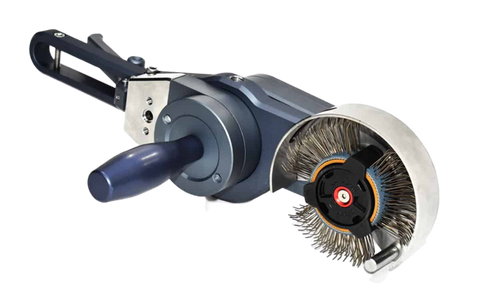What is ATEX
ATEX is an acronym that stands for "ATmosphères EXplosibles," which translates to "Explosive Atmospheres" in English. It refers to a set of European Union directives and standards that are designed to ensure the safety of equipment and systems used in potentially explosive atmospheres.
In simple terms, ATEX is all about preventing explosions in environments where there may be a mixture of flammable substances (such as gases, vapors, mists, or dust) and air. These substances, when combined with an ignition source like sparks or heat, can lead to a dangerous explosion.
ATEX regulations require engineers to design and build equipment that is safe to use in these hazardous environments. This includes things like electrical equipment, machinery, and protective systems. Engineers must consider factors such as the likelihood of explosive atmospheres occurring, the severity of potential explosions, and the specific properties of the substances involved.
To comply with ATEX, engineers need to carefully select and design equipment that meets certain safety requirements. This can involve using materials that are non-sparking or explosion-proof, implementing measures to prevent the release of sparks or excessive heat, and providing appropriate protection against potential ignition sources.
In addition to equipment design, ATEX also involves other aspects such as risk assessments, proper installation, maintenance, and training for personnel working in these environments. It aims to minimize the risk of explosions and protect the safety of workers and the surrounding environment.
Overall, ATEX is an important framework for engineers to follow when working with equipment and systems in potentially explosive atmospheres. It helps ensure that the necessary precautions are taken to prevent explosions and keep everyone safe.
Surface preparation in ATEX environments
When working in an ATEX environment, where there is a risk of explosive atmospheres, special precautions need to be taken when preparing a metallic surface for coating application. Here are a few alternative methods that can be considered:
-
Mechanical Cleaning: Mechanical methods such as abrasive blasting or grinding can be used to clean and prepare the metallic surface. These methods involve the use of tools like sandblasters or wire brushes to remove any contaminants, rust, or old coatings from the surface. It's important to ensure that the equipment used is designed for ATEX environments and doesn't create sparks or heat that could potentially ignite any flammable substances present.
Examples of powertools that can be used under ATEX conditions:
 |

|
-
Chemical Cleaning: Instead of mechanical methods, you can use chemical cleaning processes that are specifically formulated for ATEX environments. These processes typically involve the use of non-flammable solvents or detergents that effectively remove contaminants and prepare the surface for coating. It's essential to choose cleaning agents that are safe to use in explosive atmospheres and follow the manufacturer's instructions for their application.
-
Ultra-High Pressure Water Jetting: Another option is to utilize ultra-high pressure water jetting. This technique employs a specialized system that uses water at extremely high pressures to clean the surface. The force of the water effectively removes dirt, rust, and other impurities. It's crucial to select equipment that is approved for ATEX environments and ensures that no sparks or heat are generated during the process.
-
Vapor Blasting: Vapor blasting, also known as wet blasting, is a method that combines the use of water, abrasive media, and compressed air to clean and prepare the metallic surface. The water acts as a lubricant, reducing heat and sparks generated during the process. The choice of abrasive media and equipment should be suitable for ATEX environments.
Remember, when working in an ATEX environment, it's vital to consult and comply with local regulations and guidelines. Engaging with experts and professionals who specialize in ATEX requirements and surface preparation in hazardous areas is strongly recommended to ensure the safety of personnel and the facility.

